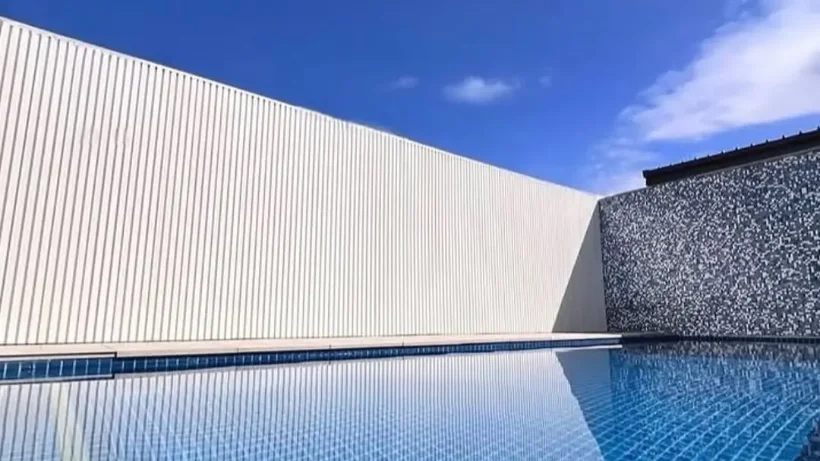
Choosing between cladding and rendering is critical in improving your property’s protective features and aesthetics. Either finish can bring your residential or commercial structure to life, add character, and enhance its resistance to extreme temperatures.
Although each alternative has unique advantages, understanding their differences allows Australian homeowners to make sound, long-term buying decisions. As trusted Gold Coast wall cladding professionals with extensive industry experience, we’re here to help you choose the appropriate option, backed by our knowledge and expertise.
This blog will delve into the pros and cons of cladding vs rendering, empowering homeowners to make the right choice for their specific requirements and preferences.
What Is Cladding?
Builders apply cladding and rendering to structural exteriors. However, they differ in application techniques and material compositions.
Construction professionals install cladding via fixed wall panels available in various materials, including the following:
- Timber and engineered wood
- Natural stone
- Stone veneer
- Fibre cement
- Metal, including aluminium, zinc, steel, and copper
- Vinyl (PVC)
- Ceramic and terracotta
- Aluminium composite material
Builders install cladding with various profiles, which refer to specific panel arrangements that enhance aesthetic appeal, such as sleek and modern or rustic and conventional.
Our Brisbane wall cladding specialists can recommend the suitable profile or board orientation for your residential or commercial structure, enhancing aesthetics and protection against the elements and providing a cost-effective strategy for your building needs.
What Are The Pros of Cladding?
The pros of cladding include the following:
Longevity
Manufacturers have developed elegant, resilient external sheathings that significantly minimise costly replacements and maintenance. Modern, durable timber claddings endure for over thirty years, providing homeowners and businesses with secure, reliable exterior protection and peace of mind.
Environmentally friendly
Many Australian clients prefer eco-friendly claddings that help preserve the environment and leave minimal carbon footprints. We recommend choosing premium timber cladding because it’s one of the most sustainable alternatives with a low environmental impact.
Ensure your cladding is FSC- or PEFC-certified to support sustainable forestry practices and a greener environment.
Elegant
Various finishes, such as timber, natural stone, fibre cement, metal, vinyl, or aluminium composite material, add an elegant touch to structural exteriors.
Clients who prefer conventional sheathings can choose between feather edge or shiplap. Conversely, we recommend either a tongue-and-groove or a square-edge arrangement for those who prefer stylish modern claddings.
Whether you prefer a traditional or modern facade, consider your aesthetic preferences carefully. Consult a trusted cladding specialist who can recommend the appropriate sheathing.
Curb appeal
Installing resilient, lavish cladding enhances curb appeal and property value. The durable and elegant exterior attracts potential buyers considering an abode that aligns with their unique preferences.
What Are The Cons of Cladding?
The cons of cladding include the following:
Cost
Although cladding can be costly, the expenses hinge on your preferred wood type and the job’s scope and magnitude. The most cost-effective alternatives in Australia include weatherboard, brick, metal, and vinyl cladding.
Whether choosing affordable upfront cladding that requires further maintenance or a lavish option with a considerable return on investment, you can find an option that fits your long-term needs.
Maintenance
Since many cladding materials are natural, they are prone to rotting or splitting. Hence, builders recommend proper and timely maintenance to preserve your facade’s original state.
Cladding maintenance depends on your exterior’s durability and preservative treatments or coatings. Your contractor can recommend the appropriate maintenance cycle to preserve your sheathing’s elegance and resilience.
What Is Rendering?
Rendering (cement rendering or solid plastering) is the application of cement to facades or internal brick or concrete walls to achieve a smooth, textured finish. The thin layer protects the structure from harsh climates and creates an elegant, stylish facade.
Rendering has been a widely accepted construction technique in Europe for centuries. It wasn’t until the mid-1950s that it became a staple in Australian mudbrick and stone structures. Rendering has become a popular application for the past seven decades.
What Are The Pros of Rendering?
The pros of rendering include the following:
Affordability
Rendering is more affordable than oak boarding or cladding. It’s a cost-effective technique that improves facade durability, enhances aesthetics, and increases property value.
Cement and lime renders are the most popular and affordable option in Australia. Although the acrylic and insulating versions cost more, they provide a smoother finish and better thermal efficiency.
Fast application
Timber cladding board installation is more tedious and time-consuming than rendering. Builders can finish the latter task for a medium house in a week, but cladding can take up to two weeks, depending on the project’s complexity.
Improved structural integrity: Rendering enhances a building’s structural integrity and stability, offering residents in earthquake- and disaster-prone areas a sense of relief knowing their abodes can withstand the elements. This added strength can be a game-changer in your decision-making process.
Energy efficiency and insulation
Rendering improves a structure’s insulation and energy efficiency by minimising heat transfer between the building’s interior and exterior. Consequently, occupants enjoy regulated temperatures year-round and significantly lower exorbitant monthly energy bills.
Stunning aesthetics
Rendering makes Australian brick and stone house facades stylish and elegant. Builders can customise the rendering’s texture, pattern, and design according to their client’s preferences. A rendered house with stunning aesthetics and improved energy efficiency enhances curb appeal and attracts potential buyers.
What Are the Cons of Rendering?
The cons of rendering include the following:
- Appearance: Rendering has impacted the Australian construction industry since the 1950s. Although it enhances aesthetics, some clients feel it’s outdated for contemporary settings and limits their design options.
- Cracking: Cement-based renders can crack over time, especially in areas with extreme temperatures. To prevent this, we recommend correctly applying flexible renders such as acrylic or silicone and regularly inspecting for small cracks.
- Maintenance: Renders are also prone to discolouration which may require frequent cleaning or resealing to regain their original allure.
Conclusion
Although cladding vs rendering can be intimidating for some clients, doing extensive research can help them choose the appropriate strategy for their unique situations.
Builders install cladding as durable, eco-friendly fixed-wall panels that endure over time and enhance aesthetics and curb appeal. However, they may require frequent maintenance, leading to accumulated expenses over time.
On the other hand, rendering is a cost-effective application technique that improves structural integrity and energy efficiency in less time than cladding. Its downsides include outdated appearances, cracking, and discolouration.
If you prefer Sydney wall cladding for your residential or commercial structure, we’re here to help. Our staff can schedule an on-site inspection and create an upfront, personalised quotation for your needs and budget. Contact us today to start a discussion.





